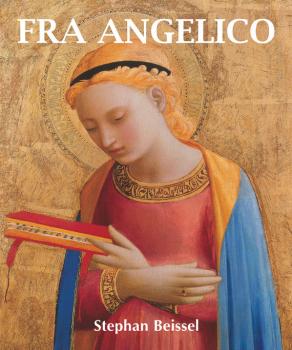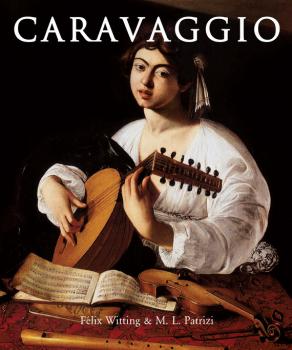Temporis
Скачать книги из серии TemporisAestheticism in Art
William Hogarth wrote his Analysis of Beauty in 1753, during the Age of Enlightenment. Through this captivating text, he tends to define the notion of beauty in painting and states that it is linked, per se, to the use of the serpentine lines in pictorial compositions. He calls it the line of beauty . His essay is thus dedicated to the study of the composition of paintings, depending on the correct use of the pictorial lines, light, colour, and the figure's attitudes. These timeless concepts have been applied by several artists through the centuries. Paintings from every period have here been chosen to support this demonstration. They allow us to explore the various manners in which beauty can be expressed in painting.
The Splendor of English Gothic Architecture
This book explains and celebrates the richness of English churches and cathedrals, which have a major place in medieval architecture. The English Gothic style developed somewhat later than in France, but rapidly developed its own architectural and ornamental codes. The author, John Shannon Hendrix, classifies English Gothic architecture in four principal stages: the early English Gothic, the decorated, the curvilinear, and the perpendicular Gothic. Several photographs of these architectural testimonies allow us to understand the whole originality of Britain during the Gothic era: in Canterbury, Wells, Lincoln, York, and Salisbury. The English Gothic architecture is a poetic one, speaking both to the senses and spirit.
The Lost Treasures Persian Art
Housed in the Hermitage Museum along with other institutes, libraries, and museums in Russia and the republics of the former Soviet Union are some of the most magnificent treasures of Persian Art. For the most part, many of these works have been lost, but have been catalogued and published here for the first time with an unsurpassed selection of colour plates. In a comprehensive introduction, Vladimir Lukonin, Director of the Oriental Art section of the Hermitage Museum, and his colleague Anatoli Ivanov have broadly documented the major developments of Persian Art: from the first signs of civilisation on the plains of Iran around the 10th century BCE through the early 20th century. In the second part of the book they have catalogued Persian Art giving locations, origins, descriptions, and artist biographies where available. Persian Art demonstrates a common theme which runs through the art of the region over the past three millennia. Despite many religious and political upheavals, Persian Art whether in its architecture, sculpture, frescoes, miniatures, porcelain, fabrics, or rugs; whether in the work of the humble craftsmen or the high art of court painters displays the delicate touch and subtle refinement which has had a profound influence on art throughout the world.
Taiwan Art & Civilisation
Taiwan's specific situation in Asia is the source of its thorn past. Situated in the South East of China, Taiwan was at the crossroads of many maritime routes and squeezed between its neighbors, China and Japan. After centuries of foreign occupation, Taiwan has a unique history. Taiwan, Art and Civilization sheds light on Taiwan's beautiful scenery as well as its colorful history in the form of a true initiatory trip. Through magnificent illustrations, Taiwan reveals its secret beauty, its fauna and flora intertwined with its unique architecture. Home of the traditional and the modern, the gorgeous island is also the home of a very dynamic artistic scene. One thus fully grasps why the Portuguese named her Ilha Formosa, beautiful island.
Hans Memling
Little is known of Memling’s life. It is surmised that he was a German by descent but the definite fact of his life is that he painted at Bruges, sharing with the van Eycks, who had also worked in that city, the honour of being the leading artists of the so-called ‘School of Bruges’. He carried on their method of painting, and added to it a quality of gentle sentiment. In his case, as in theirs, Flemish art, founded upon local conditions and embodying purely local ideals, reached its fullest expression.
Fra Angelico
Secluded within cloister walls, a painter and a monk, and brother of the order of the Dominicans, Angelico devoted his life to religious paintings. Little is known of his early life except that he was born at Vicchio, in the broad fertile valley of the Mugello, not far from Florence, that his name was Guido de Pietro, and that he passed his youth in Florence, probably in some bottegha, for at twenty he was recognised as a painter. In 1418 he entered in a Dominican convent in Fiesole with his brother. They were welcomed by the monks and, after a year’s novitiate, admitted to the brotherhood, Guido taking the name by which he was known for the rest of his life, Fra Giovanni da Fiesole; for the title of Angelico, the “Angel,” or Il Beato, “The Blessed,” was conferred on him after his death. Henceforth he became an example of two personalities in one man: he was all in all a painter, but also a devout monk; his subjects were always religious ones and represented in a deeply religious spirit, yet his devotion as a monk was no greater than his absorption as an artist. Consequently, though his life was secluded within the walls of the monastery, he kept in touch with the art movements of his time and continually developed as a painter. His early work shows that he had learned of the illuminators who inherited the Byzantine traditions, and had been affected by the simple religious feeling of Giotto’s work. Also influenced by Lorenzo Monaco and the Sienese School, he painted under the patronage of Cosimo de Medici. Then he began to learn of that brilliant band of sculptors and architects who were enriching Florence by their genius. Ghiberti was executing his pictures in bronze upon the doors of the Baptistery; Donatello, his famous statue of St. George and the dancing children around the organ-gallery in the Cathedral; and Luca della Robbia was at work upon his frieze of children, singing, dancing and playing upon instruments. Moreover, Masaccio had revealed the dignity of form in painting. Through these artists the beauty of the human form and of its life and movement was being manifested to the Florentines and to the other cities. Angelico caught the enthusiasm and gave increasing reality of life and movement to his figures.
Edward Hopper. Light and Dark
In his works, Hopper poetically expressed the solitude of man confronted with the American way of life as it developed in the 1920s. Inspired by the movies and particularly by the various camera angles and attitudes of characters, his paintings expose the alienation of mass culture. Done in cold colours and inhabited by anonymous characters, Hopper’s paintings also symbolically reflect the Great Depression. Through a series of different reproductions (etchings, watercolours, and oil-on-canvas paintings), as well as thematic and artistic analysis, the author sheds new light on the enigmatic and tortured world of this outstanting figure.
Caravaggio
After staying in Milan for his apprenticeship, Michelangelo da Caravaggio arrived in Rome in 1592. There he started to paint with both realism and psychological analysis of the sitters. Caravaggio was as temperamental in his painting as in his wild life. As he also responded to prestigious Church commissions, his dramatic style and his realism were seen as unacceptable. Chiaroscuro had existed well before he came on the scene, but it was Caravaggio who made the technique definitive, darkening the shadows and transfixing the subject in a blinding shaft of light. His influence was immense, firstly through those who were more or less directly his disciples. Famous during his lifetime, Caravaggio had a great influence upon Baroque art. The Genoese and Neapolitan Schools derived lessons from him, and the great movement of Spanish painting in the seventeenth century was connected with these schools. In the following generations the best endowed painters oscillated between the lessons of Caravaggio and the Carracci.
Andrea Mantegna and the Italian Renaissance
Mantegna; humanist, geometrist, archaeologist, of great scholastic and imaginative intelligence, dominated the whole of northern Italy by virtue of his imperious personality. Aiming at optical illusion, he mastered perspective. He trained in painting at the Padua School where Donatello and Paolo Uccello had previously attended. Even at a young age commissions for Andrea’s work flooded in, for example the frescos of the Ovetari Chapel of Padua. In a short space of time Mantegna found his niche as a modernist due to his highly original ideas and the use of perspective in his works. His marriage with Nicolosia Bellini, the sister of Giovanni, paved the way for his entree into Venice. Mantegna reached an artistic maturity with his Pala San Zeno. He remained in Mantova and became the artist for one of the most prestigious courts in Italy – the Court of Gonzaga. Classical art was born. Despite his links with Bellini and Leonardo da Vinci, Mantegna refused to adopt their innovative use of colour or leave behind his own technique of engraving.
Paul Klee
An emblematic figure of the early 20th century, Paul Klee participated in the expansive Avant-Garde movements in Germany and Switzerland. From the vibrant Blaue Reiter movement to Surrealism at the end of the 1930s and throughout his teaching years at the Bauhaus, he attempted to capture the organic and harmonic nature of painting by alluding to other artistic mediums such as poetry, literature, and, above all, music. While he collaborated with artists like August Macke and Alexej von Jawlensky, his most famous partnership was with the abstract expressionist, Wassily Kandinsky.









